Small birds in the UK are a diverse and captivating group, contributing to the rich avian tapestry of the region. From vibrant finches to energetic tits, these feathered inhabitants play integral roles in ecosystem dynamics and bring joy to bird enthusiasts.
In the United Kingdom, an array of small bird species thrive across various habitats, including woodlands, gardens, and urban areas.
The compact size of these birds doesn’t diminish their significance; rather, it enhances their adaptability to diverse environments.
From the melodious trills of the European Robin to the acrobatic foraging displays of Long-tailed Tits, each species brings a unique charm to the British countryside.
These small avian residents are not only aesthetically pleasing but also crucial components of the ecosystem, contributing to pest control, seed dispersal, and overall biodiversity.
20 Small Birds in the UK
This exploration delves into the fascinating lives of some of these small birds, offering insights into their distinctive features, behaviors, and the vital roles they play within the intricate web of nature in the United Kingdom.
1. Eurasian Siskin
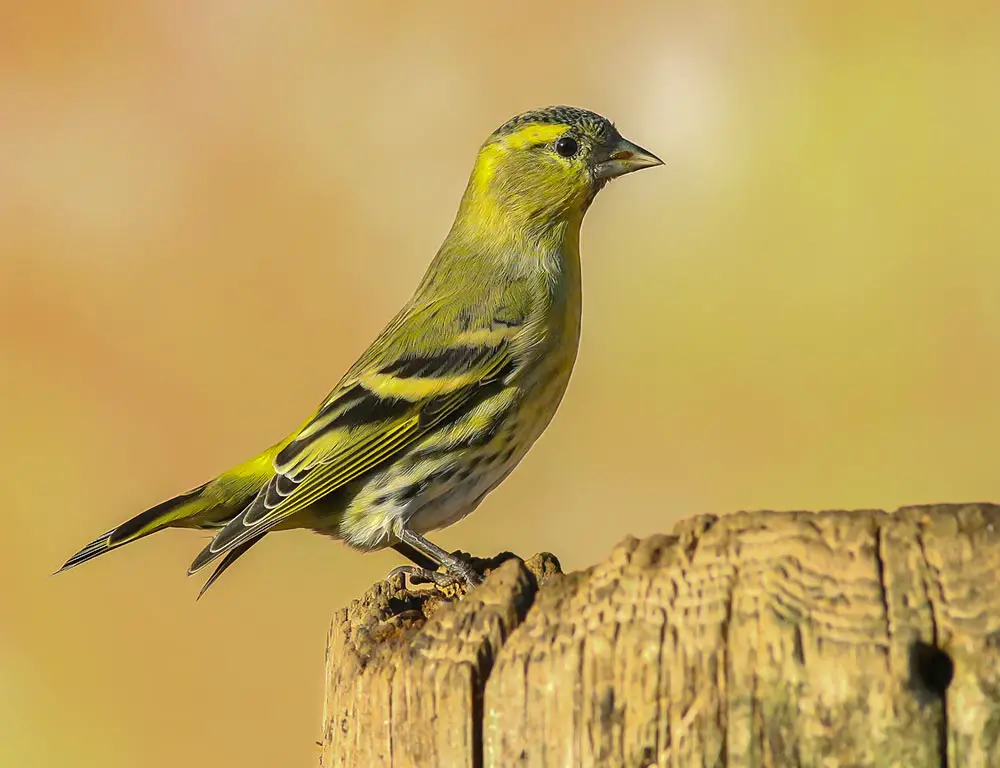
- Scientific Name: Spinus spinus
- Life Span: 2-3 years
- Size: 11-12 cm
- Weight: 12-18 grams
- Wingspan: 20-23 cm
- Status: Common
The Eurasian Siskin, with its vibrant yellow and black plumage, is a small finch that thrives in coniferous and mixed woodlands.
With a penchant for seeds, especially from alder and spruce trees, they exhibit a nomadic behavior, often forming flocks during winter. Agile and acrobatic, they navigate through branches with ease.
Breeding in open woodlands, these birds construct cup-shaped nests using twigs and grass. Their cheerful twittering adds a lively note to the woodland symphony, and they are frequent visitors to bird feeders, making them a delight for birdwatchers.
2. Little owl
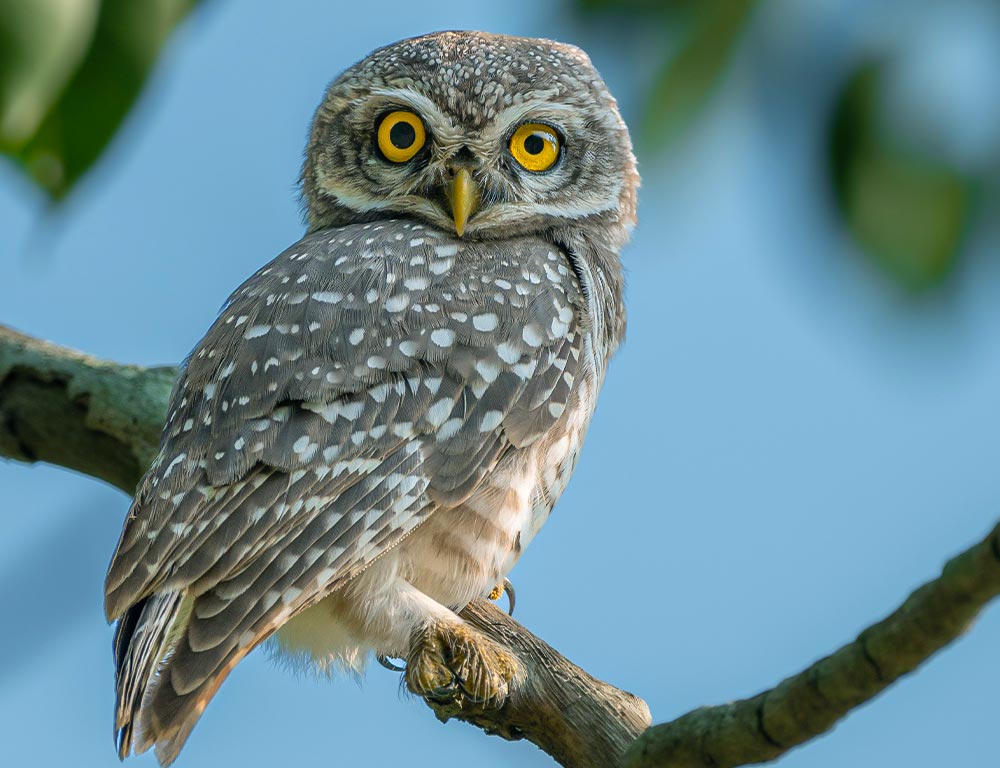
- Scientific Name: Athene noctua
- Life Span: 4-5 years
- Size: 21-27 cm
- Weight: 150-200 grams
- Wingspan: 54-58 cm
- Status: Resident Breeder
A nocturnal hunter, the Little Owl is characterized by its distinctive flat face and keen, yellow eyes. Often found in farmlands, parks, and open country, they are adept at hunting small mammals and insects.
Nesting in tree hollows, buildings, or burrows, they are territorial birds. Their presence is often revealed by their distinctive hooting calls during the night.
Despite their small stature, they are fierce predators and play a crucial role in controlling rodent populations. The Little Owl is a charming and adaptable species that has successfully integrated into human-modified landscapes.
3. Goldfinch

- Scientific Name: Carduelis carduelis
- Life Span: 2-3 years
- Size: 12-13 cm
- Weight: 14-19 grams
- Wingspan: 21-25 cm
- Status: Common
Known for their dazzling plumage and melodious twittering, Goldfinches are a familiar sight in gardens and meadows. With a preference for thistle seeds, they display remarkable agility while extracting seeds from the plant heads.
Their sociable nature makes them often seen in small flocks. During the breeding season, they construct cup-shaped nests using down, moss, and feathers.
Goldfinches are renowned for their elaborate song, contributing to the acoustic landscape of their habitats. Their adaptability and fondness for urban environments make them a cherished presence for bird enthusiasts.
4. White wagtail
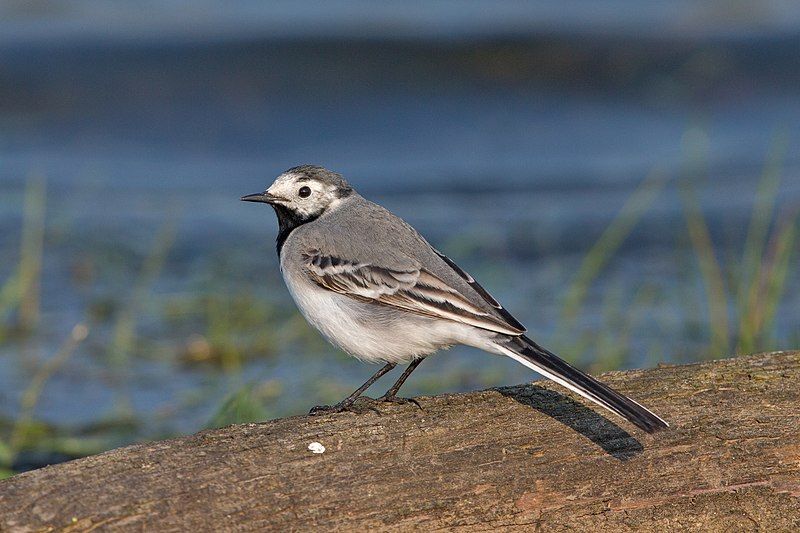
- Scientific Name: Motacilla alba
- Life Span: 2-3 years
- Size: 16-19 cm
- Weight: 15-25 grams
- Wingspan: 25-30 cm
- Status: Common
The White Wagtail, characterized by its black and white plumage, is a lively bird commonly found near water bodies. Agile and energetic, they feed on insects along the water’s edge, displaying a distinctive wagging tail.
Nesting in crevices or holes, these birds are known for their territorial behavior. Their call, a sharp “chisick,” is often heard near rivers and ponds. White Wagtails are migratory, with some populations residing year-round.
Their adaptability to various environments, from urban areas to rural landscapes, underscores their resilience. Observing their animated foraging and constant tail movement is a joy for birdwatchers.
5. Little Auk
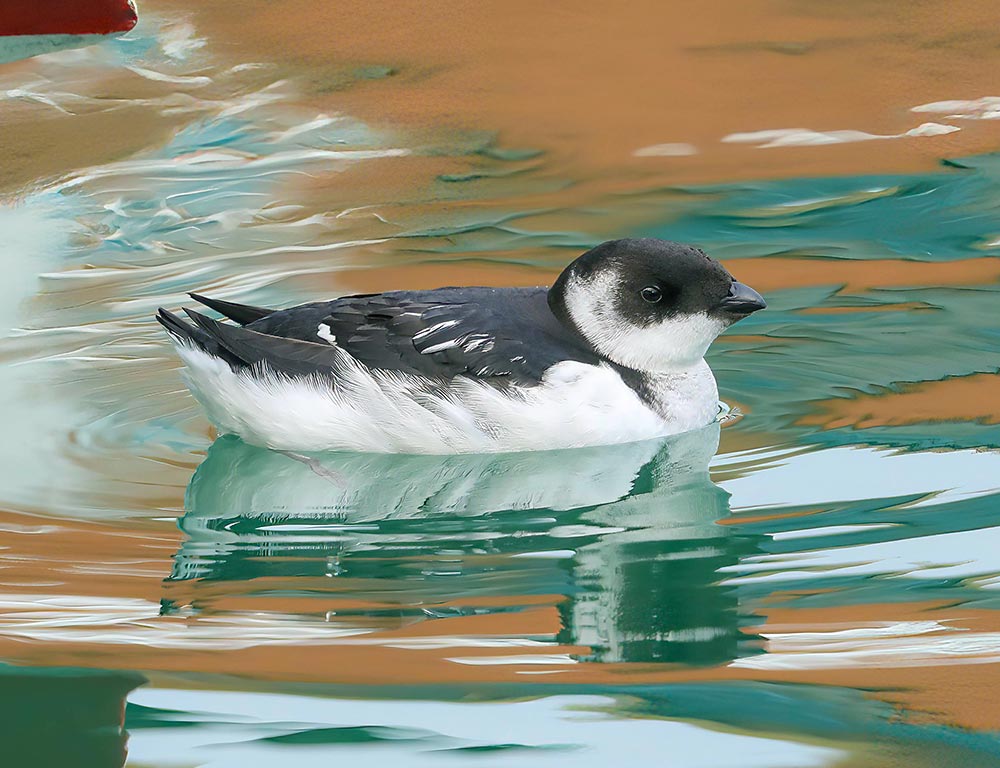
- Scientific Name: Alle alle
- Life Span: 6-10 years
- Size: 16-20 cm
- Weight: 150-350 grams
- Wingspan: 34-38 cm
- Status: Least Concern
The Little Auk, also known as the Dovekie, is a seabird well adapted to arctic environments. With a black and white plumage, they are skilled divers, hunting for fish and invertebrates beneath the water’s surface.
Nesting in cliff crevices, they form large colonies during the breeding season. Their migratory behavior takes them to open water during winter.
Despite their small size, Little Auks are robust and resilient birds, navigating harsh conditions. They play a crucial role in the Arctic ecosystem and are a testament to the adaptability of wildlife in extreme environments.
6. Magpie
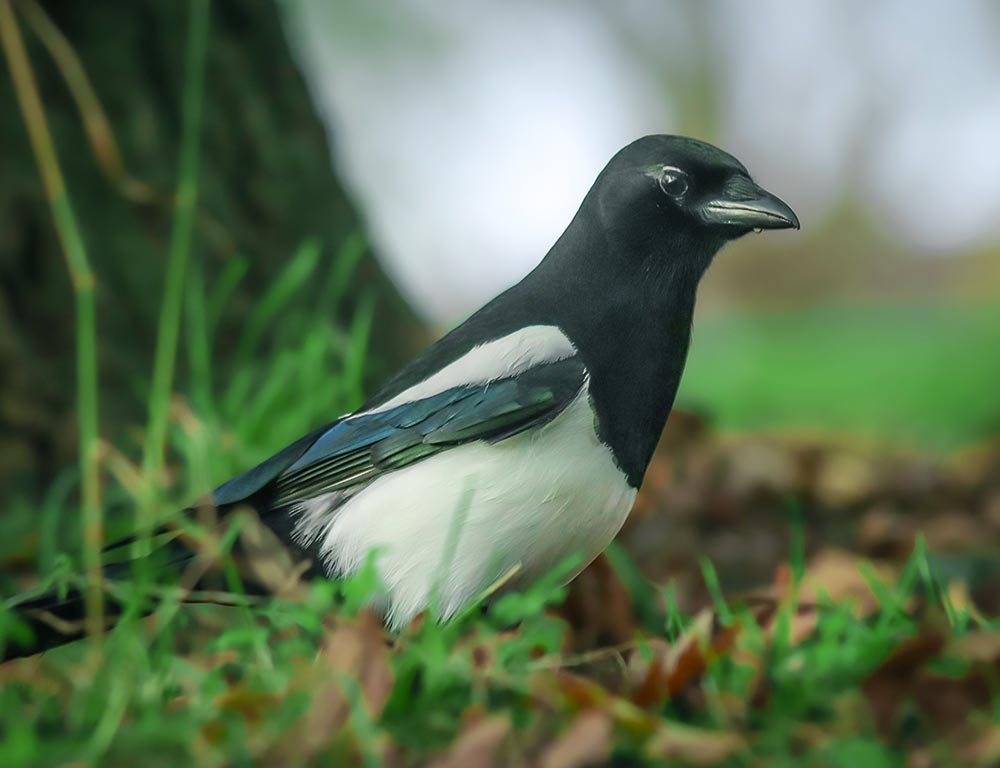
- Scientific Name: Pica pica
- Life Span: 3-5 years
- Size: 44-46 cm
- Weight: 180-250 grams
- Wingspan: 52-60 cm
- Status: Common
Magpies, with their striking black and white plumage and long tails, are intelligent and adaptable birds found in a variety of habitats, from urban areas to woodlands.
Known for their resourcefulness, they are omnivores, feeding on insects, and small mammals, and even scavenging for human food. Highly social, they often form colonies and engage in communal roosting.
Magpies are vocal birds with a range of calls, and their nest-building skills are remarkable. Despite being sometimes perceived as pests, they are valuable in controlling insect populations and contribute to the ecological balance.
7. Collared dove
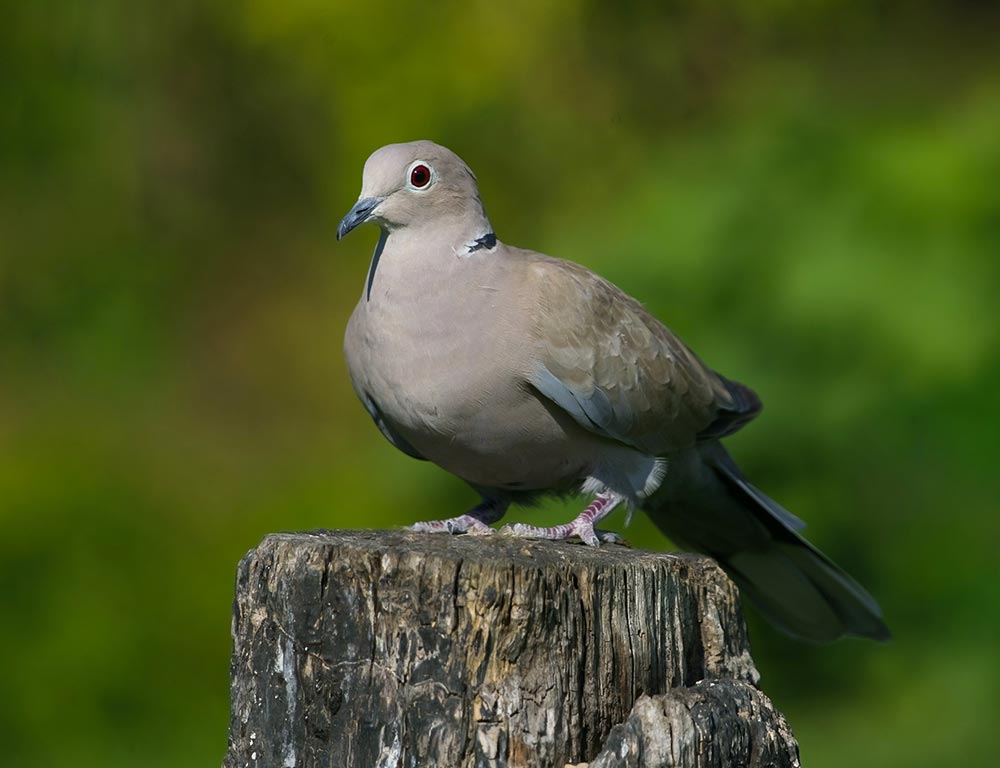
- Scientific Name: Streptopelia decaocto
- Life Span: 4-5 years
- Size: 30-33 cm
- Weight: 125-240 grams
- Wingspan: 47-55 cm
- Status: Common
Recognizable by their soft grayish plumage and distinctive black collar, Collared Doves are common residents in urban and suburban areas. Their gentle cooing is a familiar sound in many neighborhoods.
Ground-feeders, forage for seeds and grains, often visiting bird feeders. Collared Doves form monogamous pairs, and their simple nests are constructed on ledges or in trees.
Their adaptability and ability to thrive in human-altered landscapes have contributed to their widespread distribution. Collared Doves are sociable birds, and their presence brings a sense of calm and familiarity to diverse habitats.
8. Starling
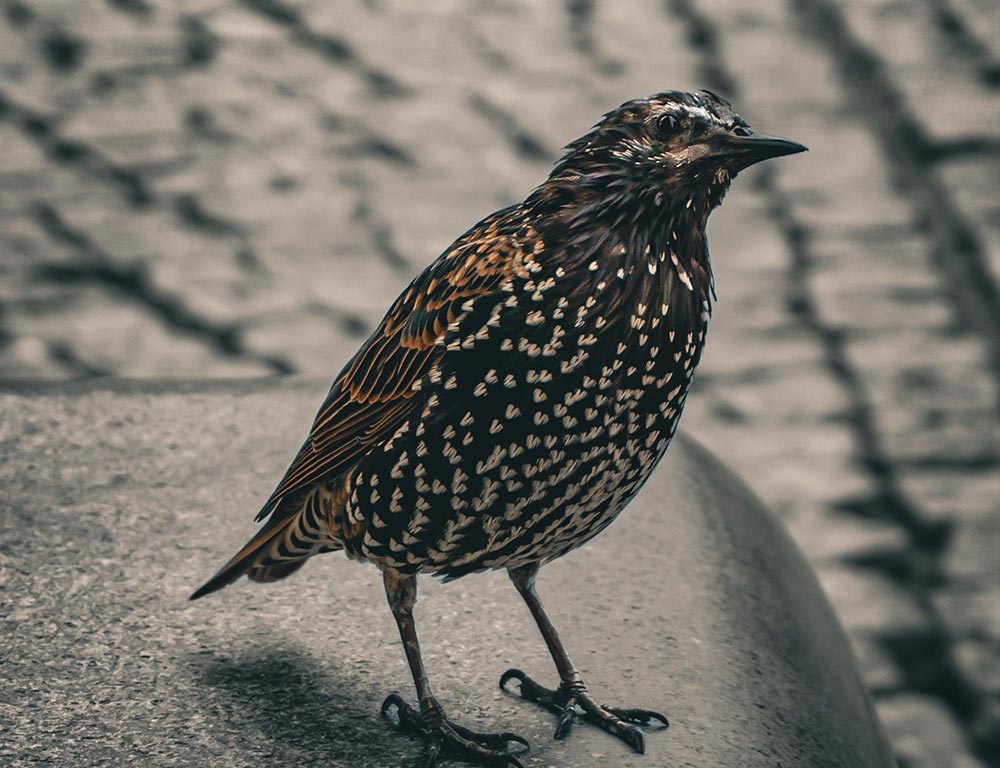
- Scientific Name: Sturnus vulgaris
- Life Span: 2-3 years
- Size: 19-23 cm
- Weight: 60-90 grams
- Wingspan: 31-40 cm
- Status: Common
Starlings, with their iridescent plumage and synchronized flight patterns, are highly social birds found in a variety of environments, from farmlands to urban centers.
Known for their vocal mimicry, they imitate a wide range of sounds, showcasing their intelligence.
Starlings are omnivores, feeding on insects, fruits, and seeds. During the breeding season, they form large, noisy colonies, creating mesmerizing murmurations in the sky.
Their adaptability and gregarious nature make them a dynamic presence in ecosystems. While considered common, their behaviors, including their intricate songs and aerial displays, make them fascinating subjects for bird enthusiasts.
9. Jay
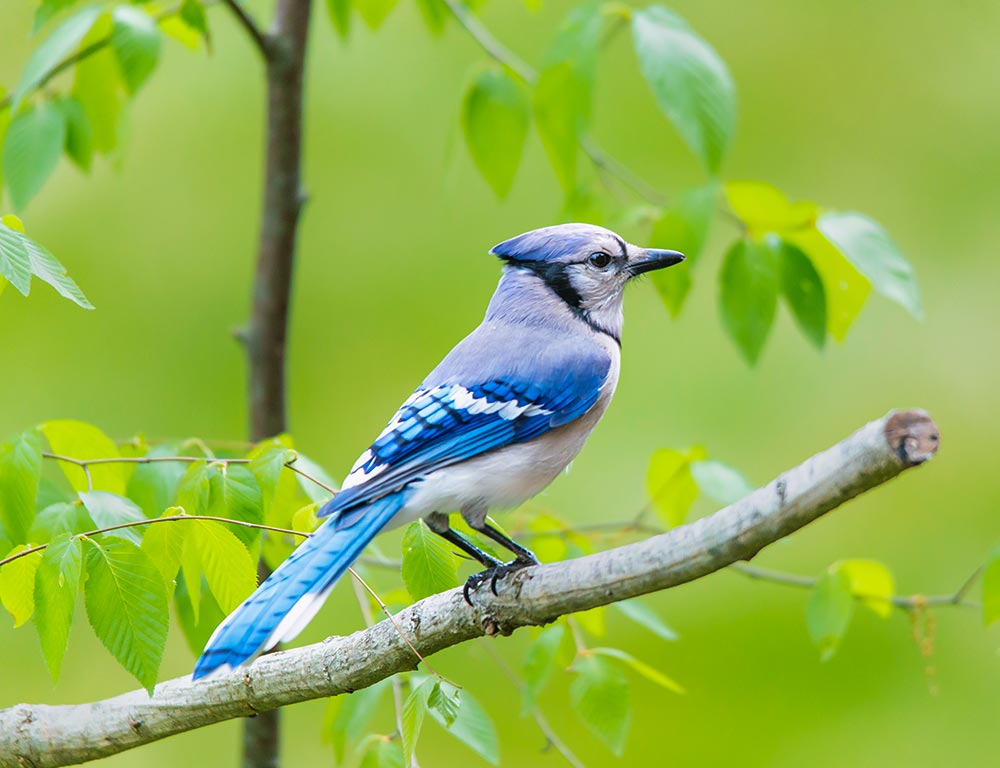
- Scientific Name: Garrulus glandarius
- Life Span: 5-7 years
- Size: 32-35 cm
- Weight: 140-180 grams
- Wingspan: 52-58 cm
- Status: Common
Jays are striking woodland birds with colorful plumage, including a pinkish-brown body and distinctive blue and black wing patches.
Known for their intelligence, they are skilled at caching food, and hiding surplus seeds for later consumption. Jays are omnivores, feeding on acorns, insects, small mammals, and eggs. Their raucous calls often betray their presence in dense forests.
Nests are typically built in trees, and they are known for their secretive and wary nature. Jays play a vital role in forest ecology, contributing to seed dispersal as they cache and forget about their hidden food stores.
10. Greenfinch
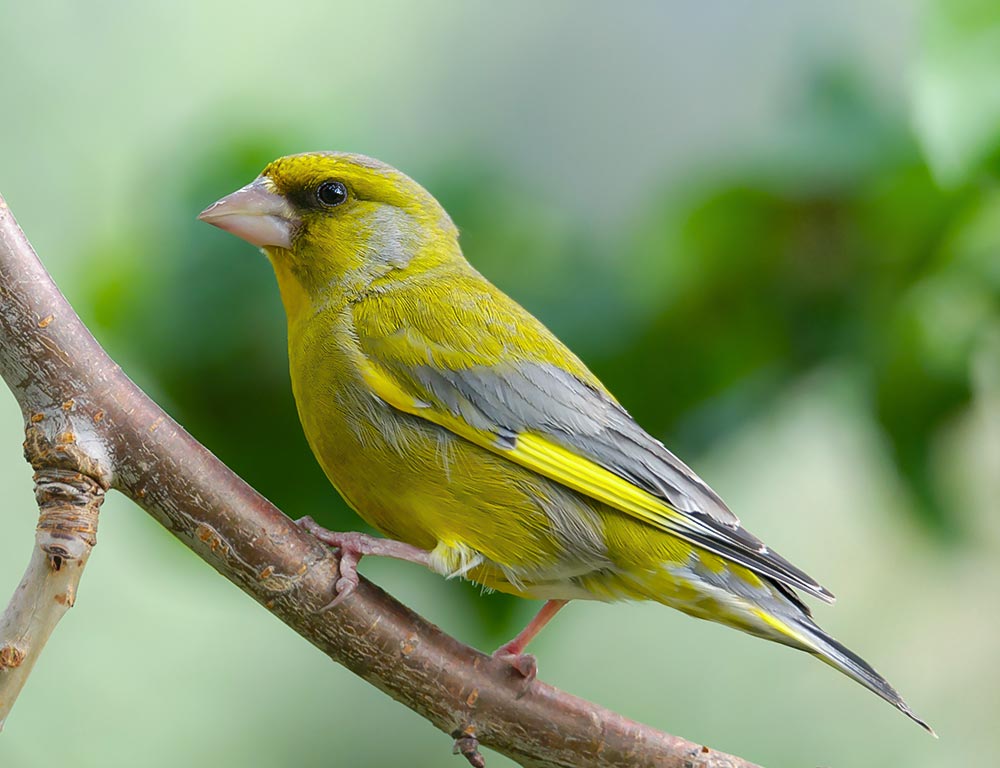
- Scientific Name: Chloris chloris
- Life Span: 2-3 years
- Size: 15 cm
- Weight: 20-30 grams
- Wingspan: 25-29 cm
- Status: Declining
Green finches are small finches with vibrant green plumage, often seen in gardens and woodlands. Their diet consists mainly of seeds, and they are frequent visitors to bird feeders.
Unfortunately, their populations have been declining due to disease, particularly Trichomonosis.
They construct cup-shaped nests in trees and bushes, often hidden from plain view. Greenfinches contribute to the diversity of birdlife, and conservation efforts are underway to address the challenges threatening their numbers.
11. Chaffinch
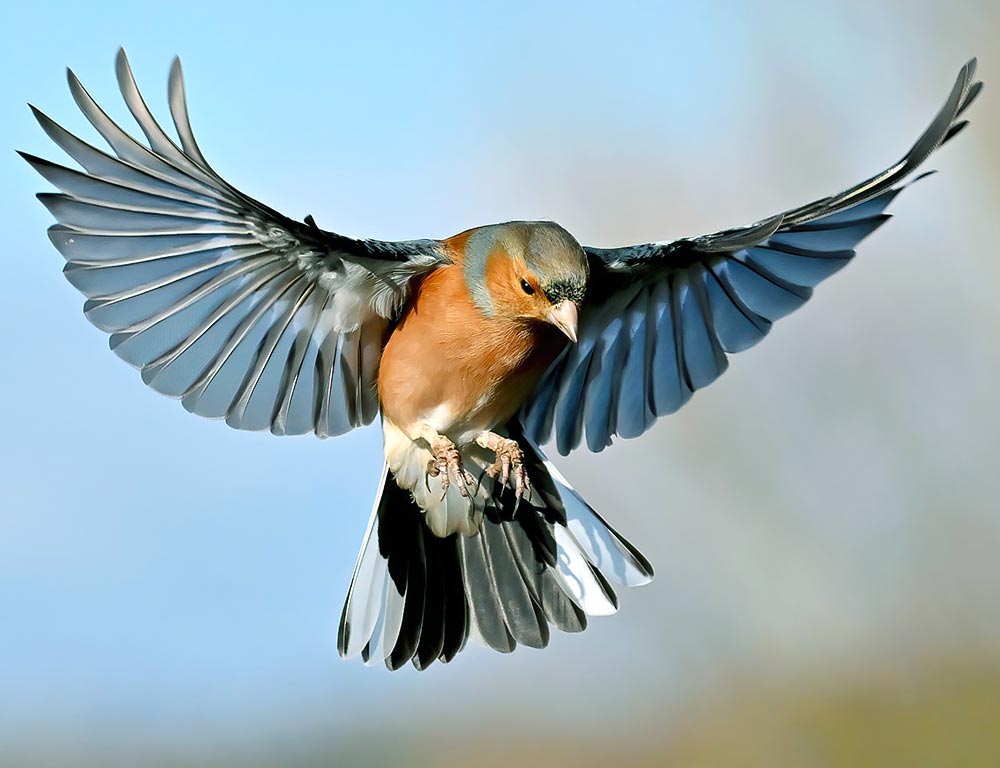
- Scientific Name: Fringilla coelebs
- Life Span: 2-4 years
- Size: 14 cm
- Weight: 20-30 grams
- Wingspan: 24-28 cm
- Status: Common
Chaffinches are well-known songbirds with males displaying a colorful plumage of pink, blue, and white during the breeding season. They inhabit a variety of habitats, including woodlands, parks, and gardens.
Chaffinches primarily feed on seeds, but they also consume insects. Their musical and varied songs contribute to the soundscape of their surroundings.
Nests are constructed in trees, and these birds exhibit monogamous behavior during the breeding season. Chaffinches are adaptable and play a significant role in seed dispersal in diverse ecosystems.
12. House sparrow
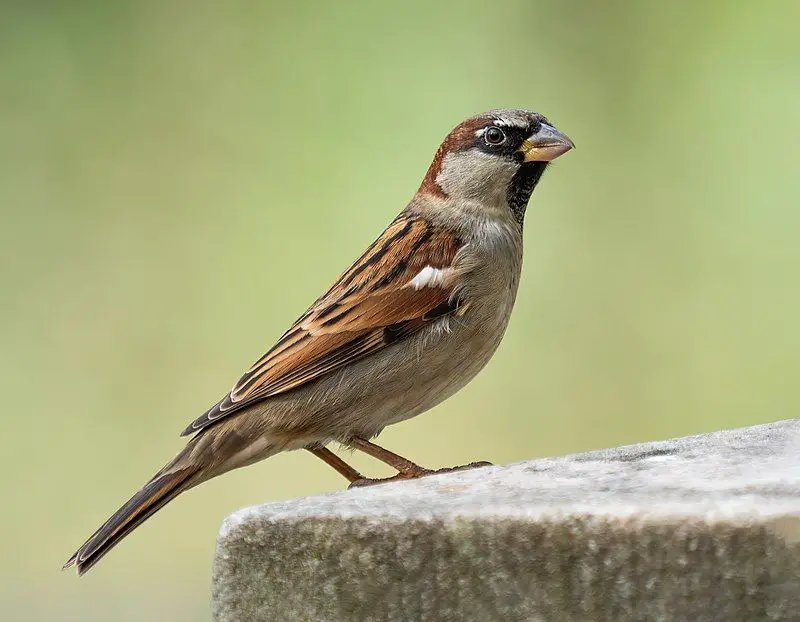
- Scientific Name: Passer domesticus
- Life Span: 3-5 years
- Size: 15 cm
- Weight: 25-39 grams
- Wingspan: 21-25 cm
- Status: Declining
House Sparrows are familiar urban birds with brown plumage, distinctive black bibs on males, and a characteristic chirping call. They are social birds, often found in flocks around human habitation. Sparrows primarily feed on seeds, grains, and insects.
Nesting in cavities and crevices, they adapt well to urban environments, utilizing buildings for shelter. Unfortunately, House Sparrow populations have seen declines, attributed to various factors, including changes in urban landscapes.
Conservation efforts aim to address these declines and ensure the continued presence of this iconic and historically associated species with human settlements.
13. Wren
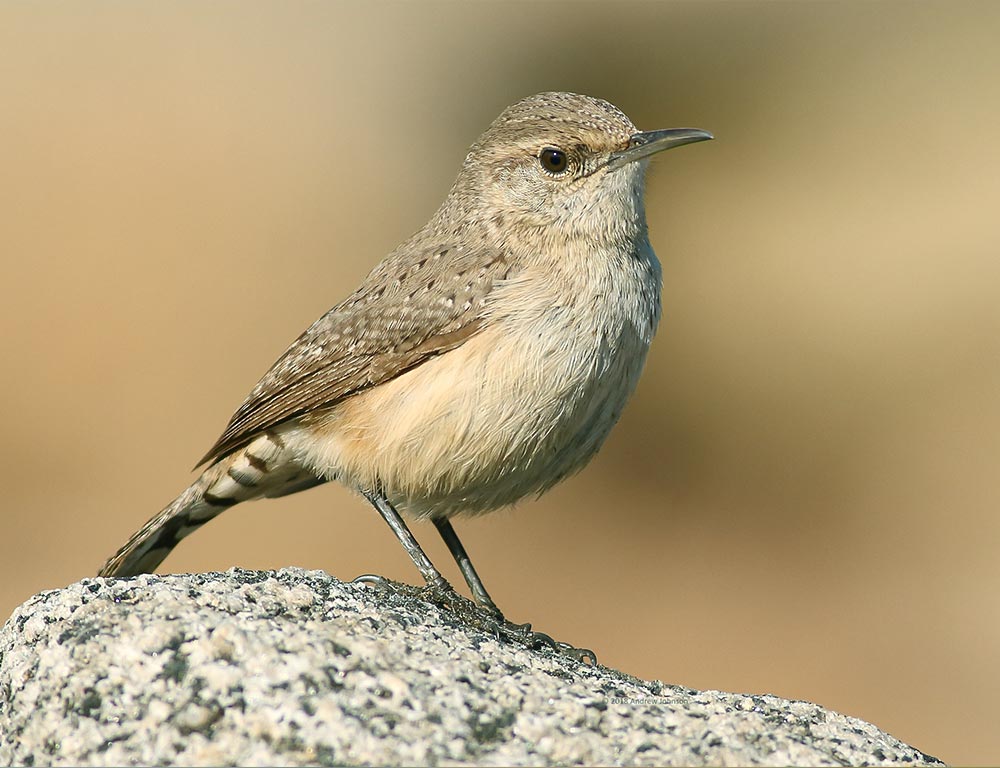
- Scientific Name: Troglodytes troglodytes
- Life Span: 2-3 years
- Size: 9-10 cm
- Weight: 8-13 grams
- Wingspan: 13-17 cm
- Status: Common
Despite their small size, Wrens are energetic and vocal birds found in a variety of habitats, from woodlands to gardens. Their brown plumage is adorned with intricate patterns, and their short, rapid songs are distinctive.
Wrens are insectivores, foraging for small invertebrates in dense vegetation. Nests, constructed by both males and females, are dome-shaped and hidden in shrubs or low trees.
Wrens are territorial and defend their nesting sites vigorously. Their ability to navigate through dense vegetation and their melodious calls make them charming additions to the avian fauna in diverse ecosystems.
14. Old-world flycatchers
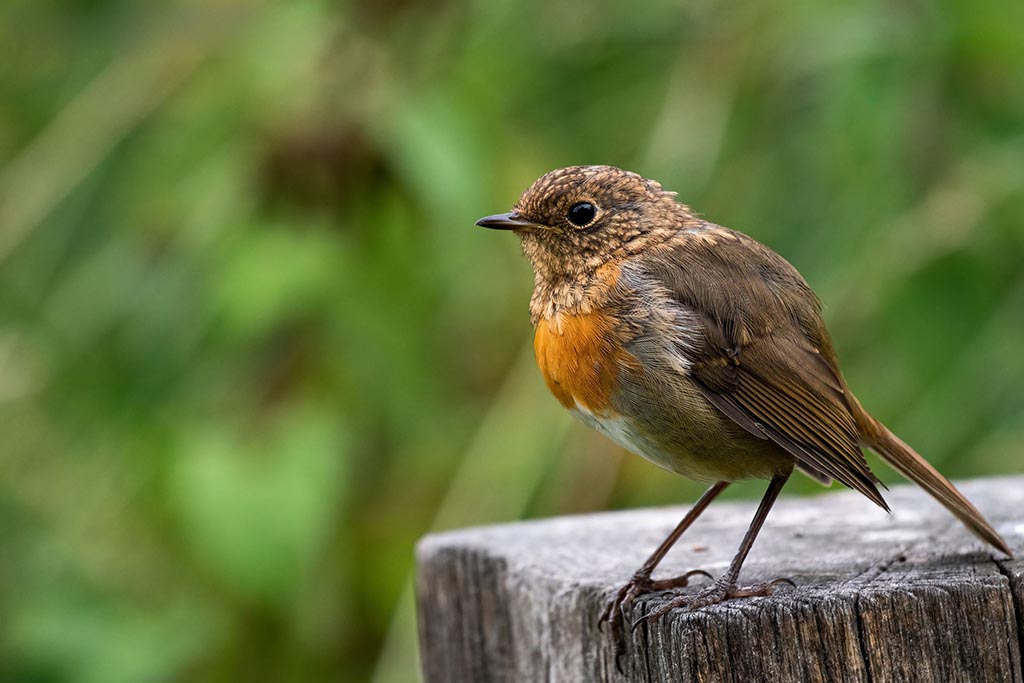
- Scientific Name: Various species
- Life Span: Varies by species
- Size: Varies by species
- Weight: Varies by species
- Wingspan: Varies by species
- Status: Various species, ranging from Least Concern to Endangered
Old-world Flycatchers encompass a diverse group of bird species found across various continents. These birds are characterized by their insect-catching behavior.
They perch on branches, waiting for insects to pass by, and then swoop down to catch them in mid-air. Their nests are often cup-shaped and well-hidden in vegetation. Some species are known for their melodious songs.
Examples include the European Robin and the Common Nightingale. These birds contribute to pest control by keeping insect populations in check and play important roles in the ecosystems they inhabit.
15. Goldcrest
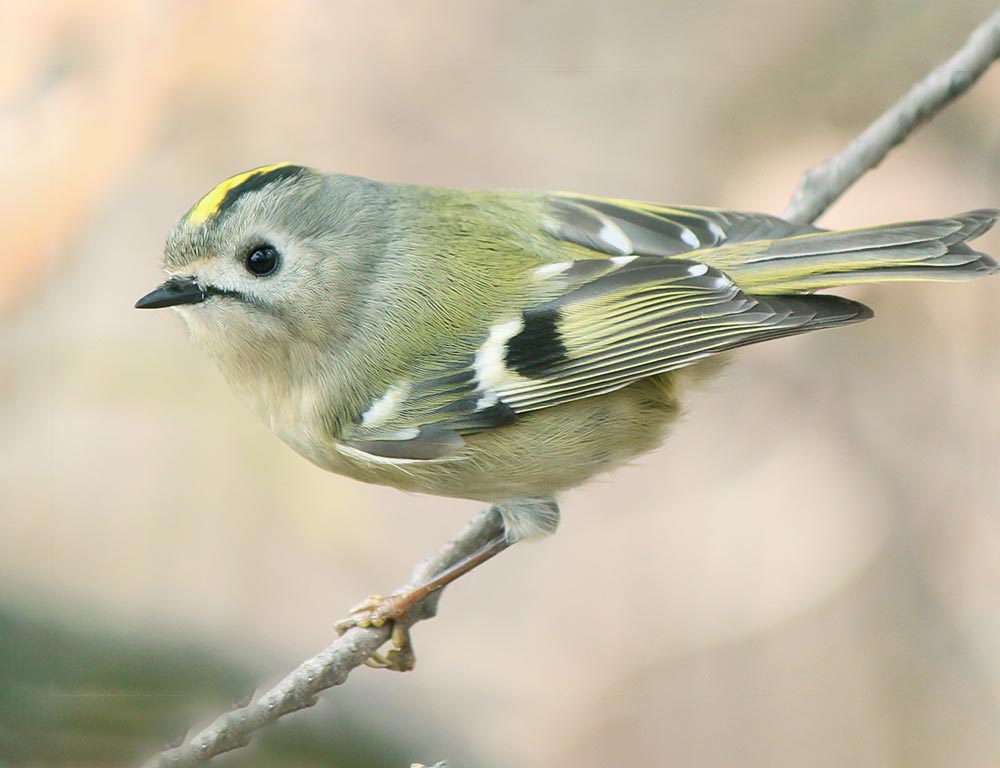
- Scientific Name: Regulus regulus
- Life Span: 4-7 years
- Size: 9 cm
- Weight: 4-7 grams
- Wingspan: 13-15 cm
- Status: Common
Goldcrests, the smallest birds in Europe, are distinguished by their vibrant green plumage and a crown stripe on their heads. These tiny birds primarily feed on insects and spiders, foraging in coniferous trees.
Nests are intricately constructed using moss and spider silk, often suspended in tree branches. Despite their size, Goldcrests are capable of long migrations.
Their high-pitched calls and active foraging behavior make them challenging yet delightful subjects for birdwatchers. In winter, they may form mixed-species flocks with other small birds, enhancing their chances of survival.
16. Dunnock
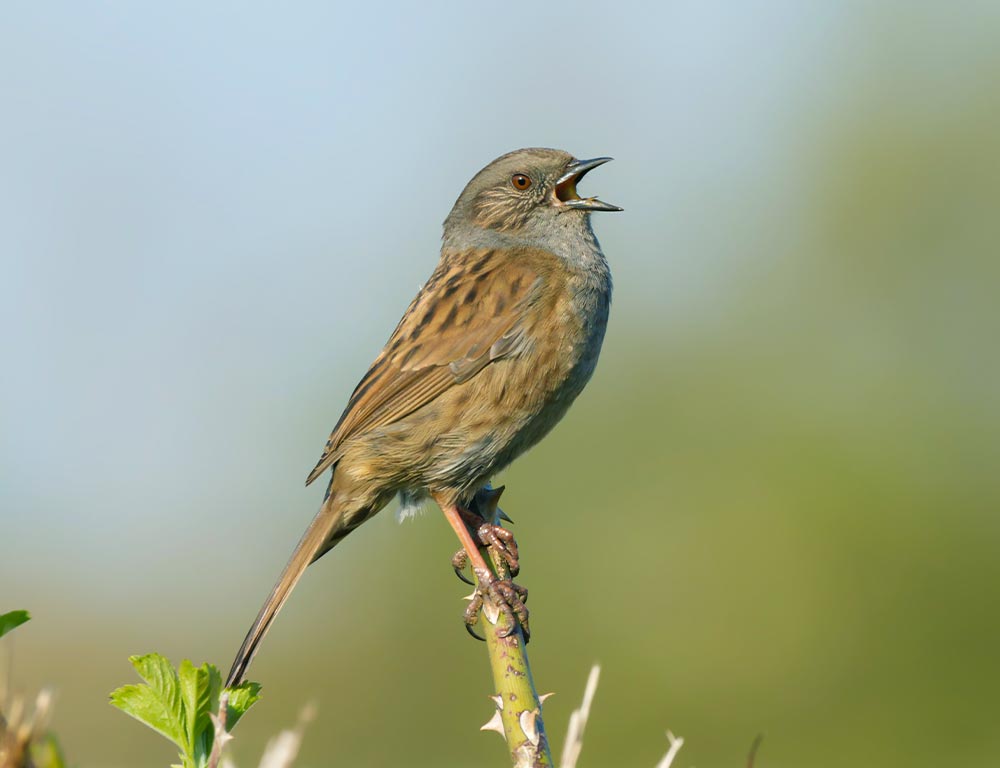
- Scientific Name: Prunella modularis
- Life Span: 2-5 years
- Size: 13-15 cm
- Weight: 20-25 grams
- Wingspan: 20-24 cm
- Status: Common
Dunnocks, often inconspicuous in appearance, are small brown birds with streaked plumage. They inhabit a variety of environments, from gardens to woodlands. Dunnocks are ground feeders, foraging for insects, seeds, and small invertebrates.
They have a unique mating system, with individuals forming complex social networks and engaging in discreet courtship behaviors. Nests are typically built low in shrubs or on the ground.
Dunnocks are adaptable and known for their subtle yet melodious song. Despite their unassuming appearance, they play essential roles in maintaining ecological balance through insect control and seed dispersal.
17. Long-tailed tit
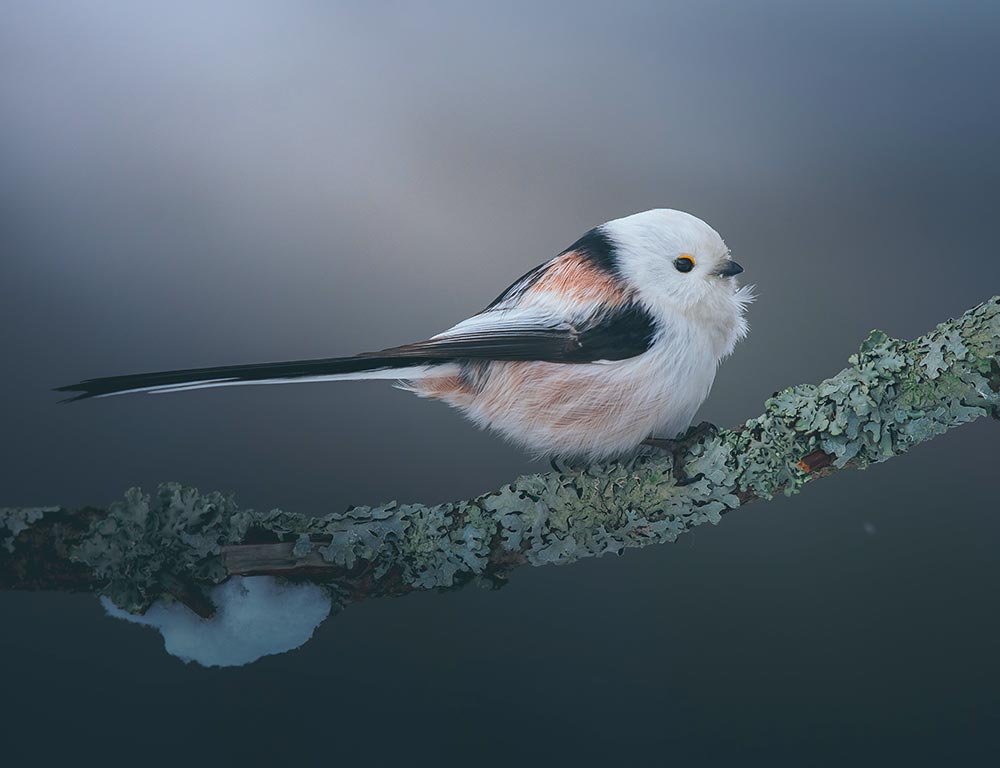
- Scientific Name: Aegithalos caudatus
- Life Span: 2-3 years
- Size: 13-15 cm
- Weight: 7-9 grams
- Wingspan: 17-20 cm
- Status: Common
Long-tailed Tits are distinctive birds with a combination of soft pink, white, and black plumage.
They are often seen in small, noisy flocks, foraging for insects, and spiders in trees and shrubs. Nests are woven from moss, lichen, and spider silk, creating a hanging structure often referred to as a “pocket.”
Long-tailed Tits are highly social, and family groups stay together even after the breeding season. Their acrobatic and energetic foraging style, accompanied by soft, high-pitched calls, adds charm to woodlands and gardens.
18. European Robin
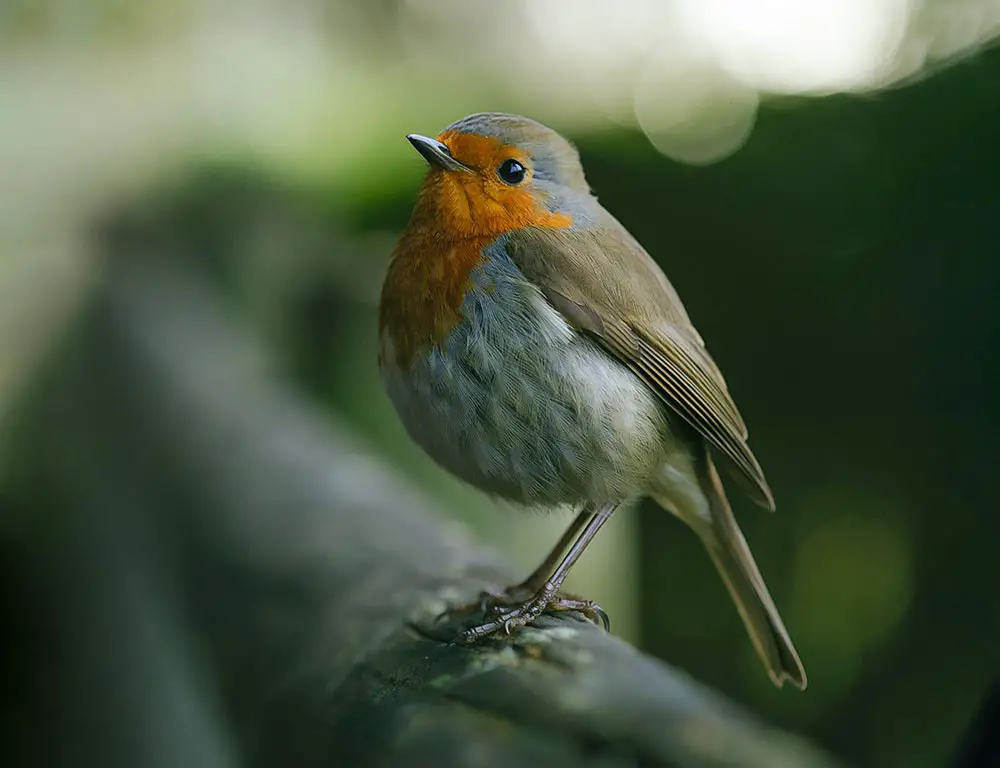
- Scientific Name: Erithacus rubecula
- Life Span: 1-2 years
- Size: 12-14 cm
- Weight: 16-22 grams
- Wingspan: 20-22 cm
- Status: Common
The European Robin, with its red breast and perky demeanor, is a beloved and iconic garden bird. They are territorial and often sing throughout the year. Robins are omnivores, feeding on insects, fruits, and seeds.
Their nests are well-hidden in vegetation, and they may have multiple broods in a breeding season.
Known for their confiding nature, some individuals become quite tame around human habitation, making them familiar and welcoming guests in gardens. The European Robin’s melodious song and distinctive appearance contribute to its popularity among bird enthusiasts.
19. Coal tit
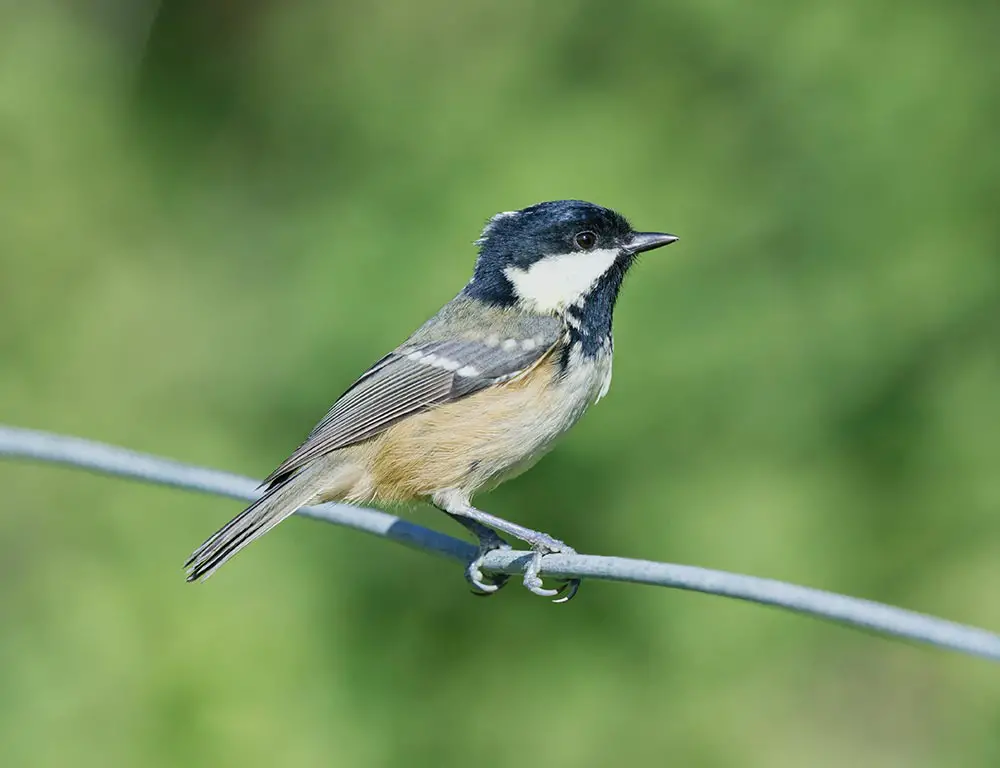
- Scientific Name: Periparus ater
- Life Span: 2-3 years
- Size: 10-11 cm
- Weight: 8-12 grams
- Wingspan: 16-18 cm
- Status: Common
Coal Tits are small birds with distinctive black caps on their heads. They are agile foragers, extracting insects and seeds from coniferous trees and shrubs.
Nests are often placed in tree cavities, and they may use moss and hair to line the interior. Coal Tits are territorial and form loose flocks during the non-breeding season.
Their high-pitched “si-si-si” calls are characteristic, and they are frequent visitors to bird feeders. Adaptable to various woodland habitats, Coal Tits play a role in maintaining the health of forests through their foraging activities.
20. Blue Tit
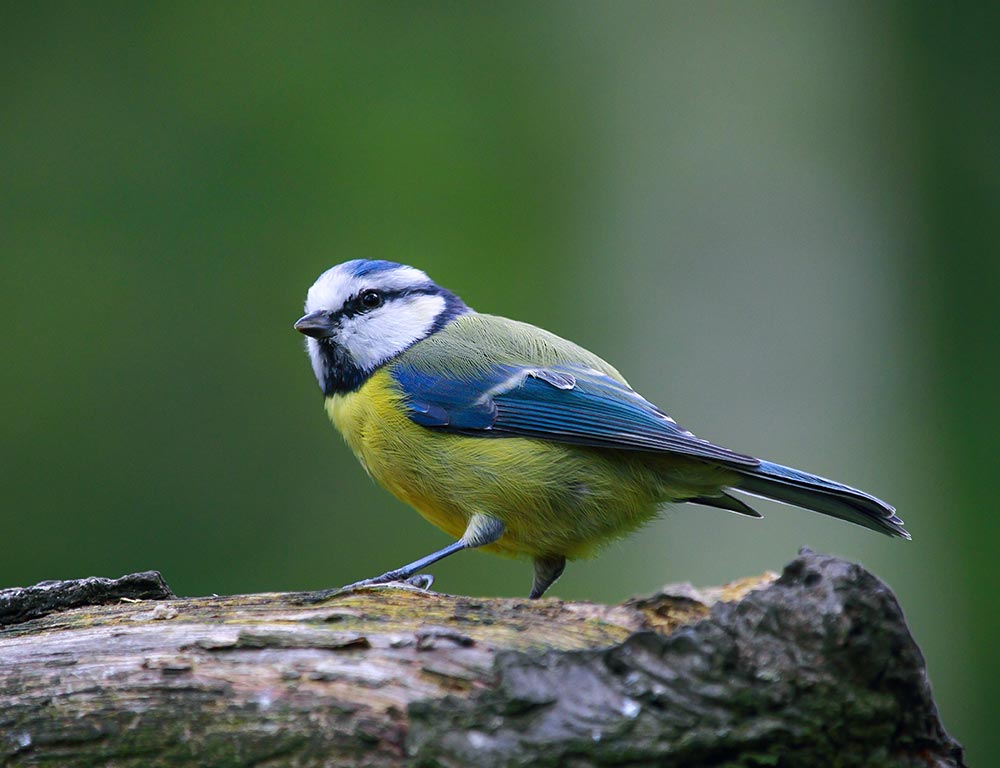
- Scientific Name: Cyanistes caeruleus
- Life Span: 2-3 years
- Size: 10-12 cm
- Weight: 9-12 grams
- Wingspan: 18-20 cm
- Status: Common
Blue Tits, with their vibrant blue and yellow plumage, are widespread and familiar garden birds. Highly adaptable, they forage for insects, spiders, and seeds in various habitats, including woodlands and urban areas.
Nests, usually in tree holes or nest boxes, are lined with soft materials like feathers. Blue Tits are agile and acrobatic, capable of hanging upside down to reach food.
Their cheerful calls and frequent visits to bird feeders make them popular among birdwatchers. Blue Tits are known for their curiosity and intelligence, with individuals capable of learning and problem-solving.
Wrapping Up
The enchanting world of small birds in the UK reveals their diverse lifestyles, ecological significance, and captivating behaviors.
From the dynamic flocks of Long-tailed Tits to the iconic presence of the European Robin, these birds contribute to the vibrancy of the British landscape.
As we appreciate their colorful plumage and melodious songs, it becomes evident that their small stature belies the profound impact they have on maintaining ecological balance.
Whether in urban gardens or secluded woodlands, these avian inhabitants bring joy to birdwatchers and contribute to the intricate tapestry of the natural world.